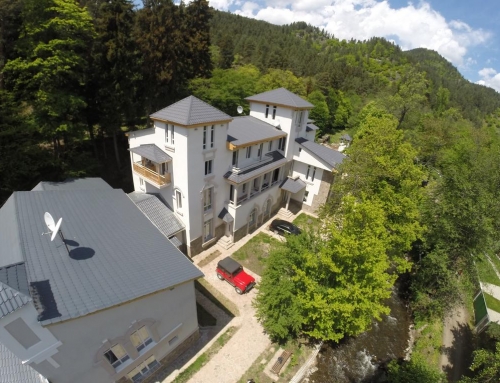Virgin Mary church Sioni is located on the street having the same name, in one of the oldest districts of Tbilisi, in upper Kala. According to the legend the first church on the very place was constructed by the King Vakhtang Gorgasali in the 5th century,
And a hundred years later in 570- 580 a new church was constructed by the wish of the Georgian Erismtavari (head of the nation, title of a Georgian nobleman) Guaram Kurapalati, the Erisnmatavaris and the population of the town actively participated in the construction of one of the most important church, its construction ended during the reign of the Erismtavari Adarnese in 620. According to the legend Adarnese and Guaram lay in rest in this church.
Sioni church was attacked and restored several times. This church is said to be totally restored by David IV the Builder in 1122, when Tbilisi was still in the hands of Georgians. In 1226 during Mongolian attack the church was damaged again, its dome was ruined according to Jalal Ed Din’s order but the Sioni Church was soon repaired, this church was damaged once more during Temur Lang attack in 1386 and it was renovated by the King Alexander the First.
Sioni church was devastated in the 17th century, during the Persian attack; the Archbishop Elise Saginashvili restored it in 1657, in the 13th century St. Michael Archangel crypt was entirely restored, where Elise Saginashvili is buried (died in 1670), but in 1668 the earthquake damaged the renovated building again.
In 1710 the restoration by Vakhtang the VI resulted in the change of the roof and frame order. In 1795, when Agha Makhmad Khan attacked Tbilisi, Sioni church was damaged again, this building was repaired several times in the 19th century.
In 1980-1983 the church facing tiles were partially renovated, and a Vakhtang Corgasali crypt was built to the church in the north part.
The plan of the church has not considerably changed since the 12th century: The building is of ‘inscribed cross’ type, its dome is supported with walls and two columns. The facing tiles belong to the 19th century, though on the upper part of the north façade the order and inscription of 1710 are still remained, where solar symbol and firebird relief depictions are observed on the façade of the church. The facades are simple, little decorations are on the dome built in the 18thI century. All its sixteen windows are ornamentally framed. The relief depictions of a cross and a chained lion on the western side and the Archangel and saints on the northern side are observed.
In the north of the church a three staged church tower was constructed by Alexander the First and renovated in the 18th century. The second church tower crowned with broach is located across from the street, in the north–western side. It is constructed in 1812 and is acknowledged as one of the earliest samples of classicist buildings.
Sioni church had been the crypt of Georgian Catholicon Patriarchs. According to the saying, St. Evstati Mtskheteli (died in 550 in tortures) lies in rest under the refectory, St. Nino’s vine cross is kept in the church.






